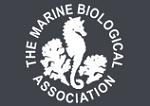APHOTOMARINE
An educational resource dedicated mainly to the photography
and diversity of marine life that can be found in coastal waters
and intertidal areas of Great Britain and Ireland by David Fenwick.

Notodelphys cf. caerulea
- dorsal view female 1
Copepod
Notodelphys cf. caerulea
- lateral view female 1
Copepod
Notodelphys cf. caerulea
- posterior dorsal view 1
Copepod
Notodelphys cf. caerulea
- anterior dorsal view 1
Copepod
Notodelphys cf. caerulea
- anterior ventral view 1
Copepod
Notodelphys cf. caerulea
- ventral view female 1
Copepod
Notodelphys cf. caerulea
- with 0.1mm division rule 1
Copepod
Notodelphys cf. caerulea
- antenna 1
Copepod
Notodelphys cf. caerulea
- furcal rami 1
Copepod
Notodelphys cf. caerulea
- furcal rami 2
Specimen found in sample of sea squirts, tunicates, taken from pontoons at Mylor Marina, Mylor Churchtown, near Falmouth, Cornwall. 18.09.15.
Species kindly identified as Notodelphys cf. caerulea by Prof. Geoff A. Boxshall FRS of the Natural History Museum, from sample.
Species likely from Ciona intestinalis, the Yellow vase sea squirt; but Dirty sea squirt, Ascidella aspersa, also collected. Species here was found after the sediment in the bottom of the collection container was strained through a 1mm square hole plastic sieve (a 99p one from a supermarket), and strained material placed in fresh seawater and looked at under a stereomicroscope.
APHOTOMARINE supports open source data recording and sharing for the benefit of wildlife, recorders, research, science and education. The project recommends the following websites and works with the following bodies and organisations.
The Marine Biological Association or MBA, based in Plymouth, is one of the world’s longest-running societies dedicated to promoting research into our oceans and the life they support. Since 1884 the MBA has been providing a unified, clear, independent voice on behalf of the marine biological community.It has a growing membership in over 40 countries.
The National Biodiversity Network or NBN is a charity that supports open source data sharing and recording supporting conservation, science and education. "Why do recorders need open source?". Simply because it supports the core values of wildlife recording and the free use of records and data over a very wide network that includes partners like the Natural History Museum.
The taxonomy used here is based on that of the following database, which is also used by the MBA, NHM and the NBN.
The World Register of Marine Species or WoRMS.

